The Metaverse & Crypto: How It Works
Arguably, video games led the way to what we now think of as the metaverse. As far back as the 1970s, first-person shooter games put us inside a pixelated virtual world. The metaverse of the future boasts more peaceful goals, creating immersive 3D virtual environments where we can collaborate, shop, and socialize rather than just shoot at monsters.
What’s The Metaverse?
Web 1.0 brought us hyperlinks, the ability to jump from one static page of text to the next. Sadly, you couldn’t order a Big Mac from the first McDonalds.com website.
Web 2.0 introduced interactivity, an internet shaped by our individual interests. Facebook and Twitter became worldwide time-wasting diversions we couldn’t resist. YouTube dared us to find the end of the internet. Amazon sold us everything.
Some see the metaverse as the next evolution for the internet, where instead of simply consuming content, shopping for the latest Crocs, and Twittering the day away on social media, we leave couch surfing behind, whisked into a new world that brings us together even when physically distanced.
Want to have your next meeting on Mount Everest? Metaverse worlds promise to transport you to the Himalayas, virtually, of course.
The metaverse represents an entirely new universe, one limited only by our collective imagination, one made of scores of worlds.
Facebook’s centralized metaverse aspirations take the lead in public awareness, but many are already buying virtual assets in decentralized worlds, staking their claim in these new frontiers.
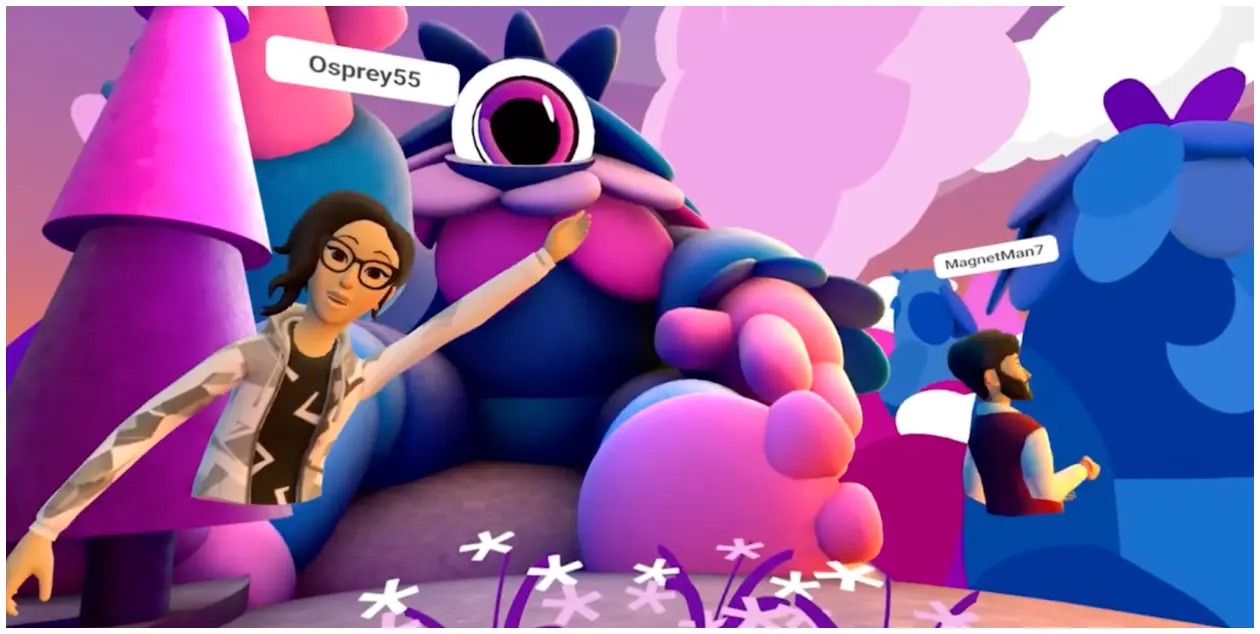
Several of today’s well-known games, such as Roblox and Fortnite, give us a glimpse into the possibilities of the metaverse. But where they limit users is in transferability. Both examples bring restrictions; in-game currency and assets remain trapped behind walls of code.
What separates the metaverse worlds from wall-garden 3D games and simulations are the broader scope and digital economies of metaverse worlds. This is where virtual currencies meet virtual reality. The road to the metaverse is paved with crypto, with property in the metaverse deeded as NFTs. And these assets can trade in the outside world.
Crypto, Blockchain, and The Metaverse: How Are They Related?
New worlds bring new ways to transact.
In the physical world, we pay for property and services with cash and bank transfers. But in a virtual world, the blockchain becomes the recordkeeper, allowing us to buy and sell property using non-fungible tokens (NFTs) and letting us buy and sell services with cryptocurrency.
- Tokens to transact: Many metaverse projects, including Decentraland, use cryptocurrency to transact on the platform or for governance purposes.
- Property as NFTs: Non-fungible tokens used in metaverse projects allow users to own virtual assets, such as land or buildings.
- Customizations as NFTs: Non-fungible tokens also allow customizations of your avatar or other elements within the metaverse.
- Blockchains as recordkeepers: Blockchain tech provides an unchangeable record of ownership and allows transfers of ownership.
- Decentralized governance: Some projects, such as Axie Infinity, let token holders vote on proposed changes.
How to Access The Metaverse
Early iterations of metaverse worlds are already here. Decentraland and The Sandbox are among the best-known platforms, in addition to Meta’s Horizon Worlds (Facebook). The latter does not offer NFTs and is not built on blockchain technology.
- Decentraland: Step into the metaverse in a few clicks by visiting Decentraland. You can use a guest account or connect your crypto wallet such as MetaMask.
- The Sandbox: Visit the Sandbox website to get started. You’ll need to build an account or connect a DeFi wallet.
- Axie Infinity: Visit Axie Infinity to discover a metaverse world with its own token and NFTs. Buy land, items, or Axies, the in-game heroes, all available as NFTs. Bring your ETH wallet.
- Bloktopia: For stunning graphics and a growing community, visit Bloktopia, a metaverse world built on the Polygon blockchain.
Games play a big role in these early metaverse projects, preserving the value of in-game purchases through tradable NFTs and tokens.
Larger companies are also working on metaverse projects. Microsoft is focusing on work applications, and Meta has partnered with Microsoft to make work productivity tools available in its Quest Pro VR headset.
Metaverse Technology
While current metaverse worlds look like (or are) video games, a number of technologies promise to build a metaverse of the future with virtually unlimited possibilities.
- Blockchain: Many users may be reluctant to invest money in assets that can’t be traded outside the platform. Blockchain allows users to buy and sell with tokens, capturing the value of purchases with NFTs.
- Internet of Things (IoT): Metaverse worlds of the future will allow us to interact with the physical world to perform actions in the metaverse world. The internet of things, a growing web of internet-connected devices, will play a role.
- Artificial intelligence (AI): Artificial intelligence brings a universe of knowledge together. In the metaverse of the future, AI can build worlds or deliver user requests on the fly. AI can even create interactions between humans and machines using natural language processing (NLP) and an ever-growing bank of knowledge.
- 3D modeling: Detailed worlds require sophisticated 3D modeling.
- Brain-computer interfaces: Companies like Neuralink are paving the way for speed-of-light connections between man and machine that could make other control interfaces obsolete.
Internet vs. The Metaverse
Internet
- Limited interaction using text and video
- Reduced one-on-one interaction
- Mature e-commerce platforms for easy purchases (of anything)
- Useful for learning about specific topics
Metaverse
- Largely game or sim-based, but commercial applications are evolving
- Enhanced interaction that competes with real-world meetings
- Immersive, giving users new experiences not always possible in the real world
NFTs and The Metaverse: How Are They Related?
NFTs offer a way to preserve value in the metaverse. For example, many games such as Roblox and Fortnite use in-game currencies. However, assets purchased with these currencies and the currencies themselves remain trapped in the game.
NFTs provide a way to give ownership to users, a blockchain-based proof of purchase. NFTs can even spell out the rights of the holder, making them useful for products and services inside the metaverse and in the outside world.
Metaverse Companies
Several newer metaverse projects focus on decentralization or aspire to become decentralized. To achieve decentralization, projects use governance tokens that give holders the ability to vote on proposals for the project. The governing body is a Decentralized Autonomous Organization (DAO) made up of a fluid community of token holders.
- Decentraland
- The Sandbox
- Axie Infinity
- NFT Worlds
Others remain centralized, with decisions coming from company leadership, but may still shape our perception and use of the metaverse.
- Epic Games
- Roblox
- Microsoft
- Meta
Top Metaverse Projects
In a crypto context, many of the top projects still center on gaming. The trend reflects an interest in preserving the value of in-game purchases. By contrast, in-game purchases within locked ecosystems often can’t be traded and don’t trade in outside marketplaces.
1. Axie Infinity [2018]
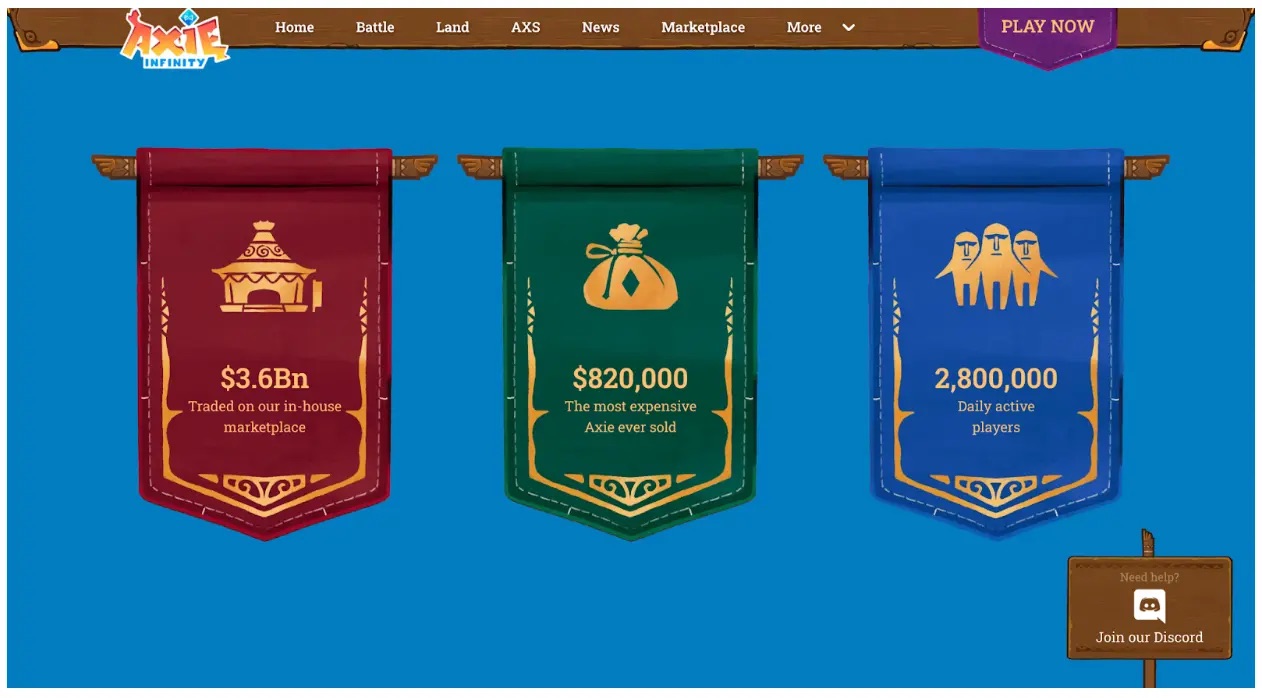
Axie Infinity played a significant role in the current NFT craze, making land, upgrades, and characters (called Axies) available as NFTs.
Token: AXS
2. Decentraland [2020]

From wearables to land, Decentraland’s ecosystem offers ways for players to customize their avatars or invest in virtual real estate. The project uses a DAO for governance. Decentraland’s MANA token fuels purchases on the Ethereum blockchain.
Tokens: MANA, NAMES, LAND
3. The Sandbox [2021]
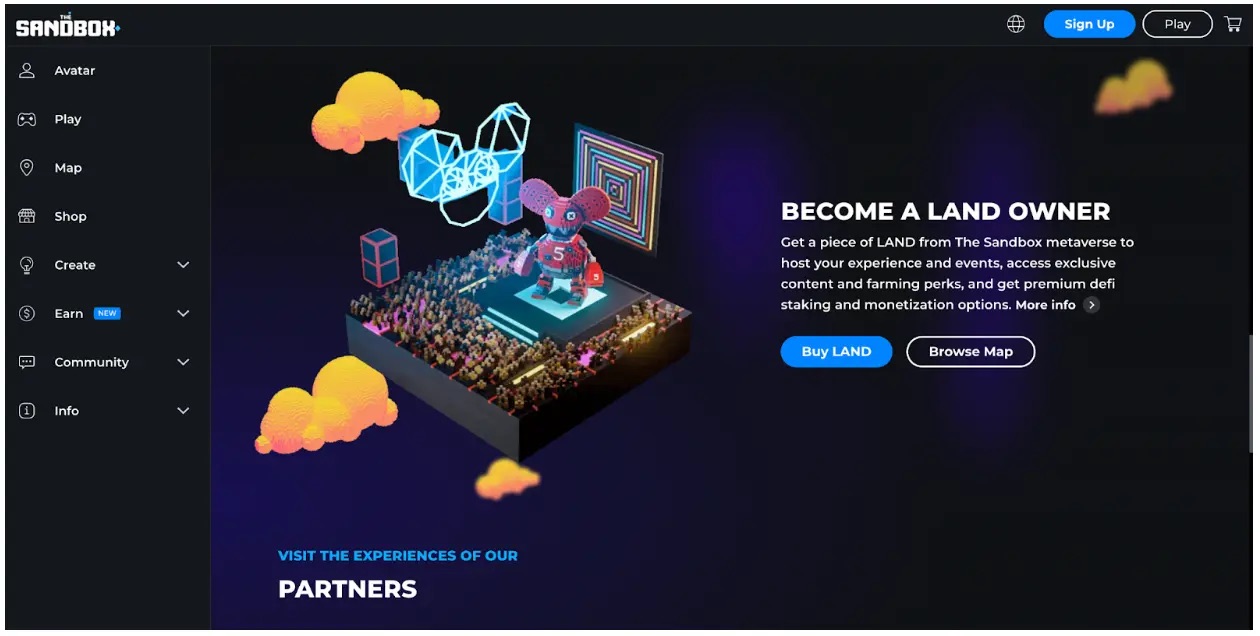
Stake your claim on metaverse real estate or upgrade your equipment in The Sandbox, one of the most popular metaverse projects. The platform uses SAND to fund purchases, an Ethereum-based token trading on Gemini and Uniswap.
Token: SAND
4. Sensorium Galaxy [2021]
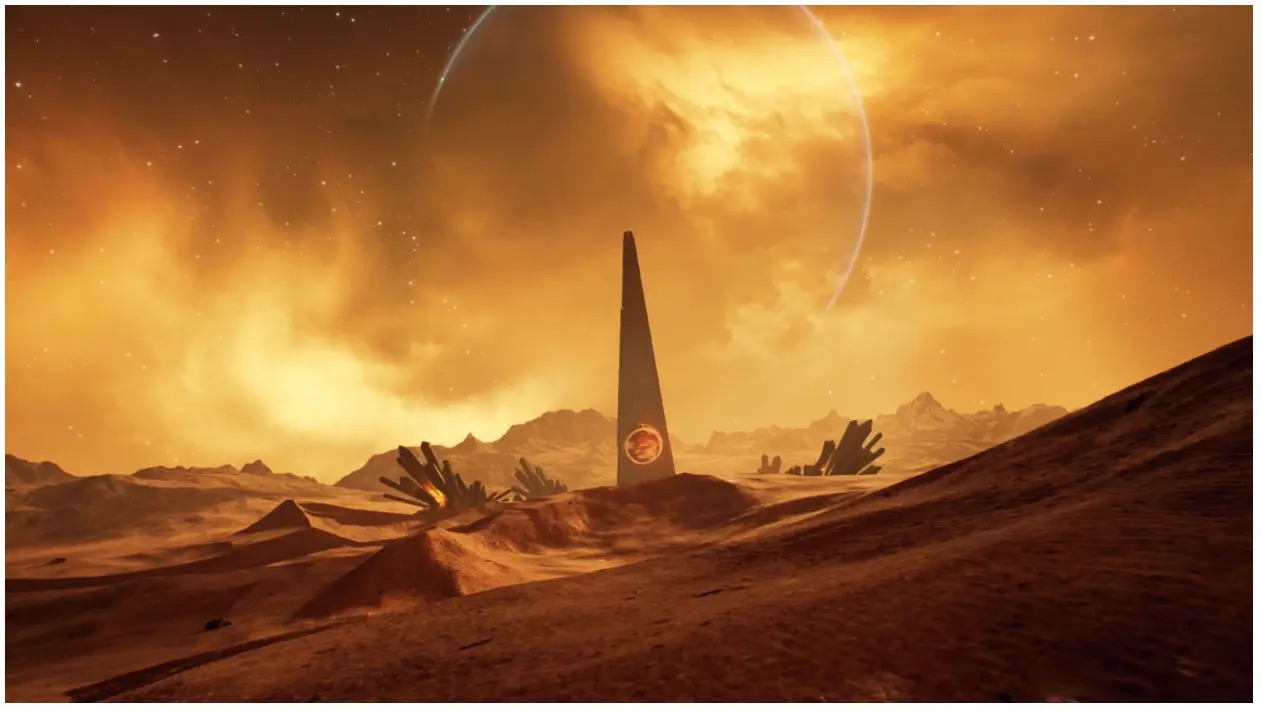
Explore an AI-powered metaverse with virtual companions you customize. SENSO, Sensorium’s in-game currency allows you to buy event tickets, upgrade your virtual being, and access exclusive activities.
Token: SENSO
5. Star Atlas [2022]
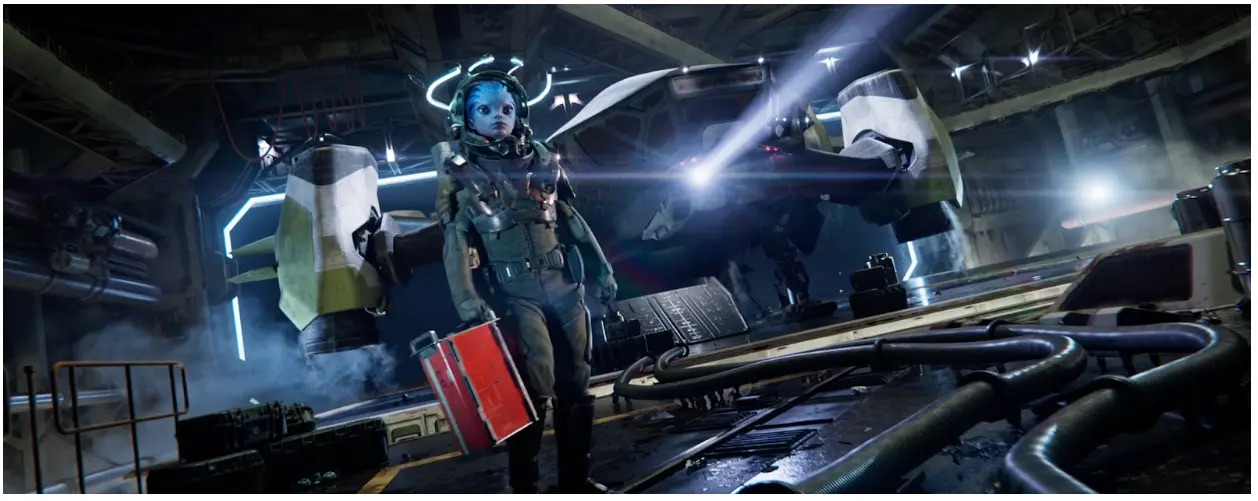
Powered by the speedy Solana network and Unreal Engine 5, a leading 3D rendering engine, Star Atlas is already making waves due to its vivid environment, despite being pre-alpha. In-game purchases range from land and structures to graphic novels. Star Atlas uses ATLAS tokens for trading whereas the POLIS token enables users to vote on governance proposals.
Tokens: ATLAS, POLIS
History of The Metaverse
The term metaverse dates back to the 1992 sci-fi novel, “Snow Crash”, which described a virtual world where people interacted in the story. While prophetic, today’s iterations of the metaverse didn’t take shape until decades later. The evolution came in steps, some of which predated the birth of the term.
[1956]: First VR machines
Morton Heilig created a 3D motorcycle simulation complete with sights and sounds (and smells) paired with vibration, a prelude of things to come.
[1994]: First VR arcade machines
VR headsets aren’t as new as we might think; SEGA launched its VR-1 virtual reality amusement park ride (with headset) in 1994.
[2003]: Second Life launches
The aptly named Second Life video game allowed players to assume an alternate identity within what is widely seen as the first “metaverse” game.
[2010]: Oculus headset arrives
Palmer Luckey invented the Oculus Rift VR, a VR headset with a 90-degree panoramic view to fully immerse the viewer.
[2014]: Mark Zuckerberg catches the VR bug
In 2014, Facebook (now Meta) acquired Oculus, making the headset a centerpiece of its fledgling metaverse ambitions.
[2018]: Axie Infinity launched
Although not initially decentralized, Axie Infinity brought interest to NFTs in a virtual environment.
[2020]: Decentraland, the first decentralized metaverse
In 2020, Decentraland became the first user-owned and governed metaverse.
[2021]: Meta launches Horizon Worlds
Billions of dollars in the making, legless avatars now work and play in Meta’s vision of the metaverse, called Horizon Worlds.
Metaverse Pros and Cons
 Pros
Pros
- Real-time collaboration with colleagues anywhere in the world
- Ownership of metaverse assets
- Users can participate in governance on blockchain-based metaverses
- Additional business opportunities
 Cons
Cons
- Additional costs for metaverse-compatible hardware and accessories
- Potential for harassment or bad behavior
- Additional steps for e-commerce purchases compared to web 2.0
The Future of The Metaverse: Predictions
While many of today’s metaverse projects target a gaming audience, the future is yet to be seen. Companies like Meta and Microsoft see a future in which we work in the metaverse rather than commuting. Other possibilities include commerce, such as immersive shopping experiences in virtual worlds or social activities where we interact with digital representations of real-world people anywhere on the planet.
MarketsAndMarkets predicts the metaverse to grow to $427 billion by 2027, citing continued growth in related spaces, including virtual reality devices and the digitization of art as well as retail products. The report also sees smartphones as a hub for a new generation of augmented reality devices.
Co-CEO at Upland, Dirk Lueth, envisions the metaverse as a part of everyday life, a place where we work and play. Other possibilities include implants that make external controls for metaverse worlds obsolete. Upland hosts a virtual property game that mirrors the real world.
The metaverse isn’t a single place or vision. Corporations like Microsoft and Meta will monetize their own visions for virtual worlds, whereas community-governed projects each go their own way. Daily life may find us in both.
Frequently Asked Questions
Several metaverse projects are live now, including Meta’s Horizon Worlds and Decentraland.
Navigating to the metaverse is as easy as using a web browser, although you may need to download an app. For example, you can get to Meta’s Horizon Worlds here.
Metaverse technology refers to a combination of elements that help drive development, including 3D rendering engines, artificial intelligence, and devices that enhance virtual reality.
Several metaverse projects, including The Sandbox and Decentraland, use crypto tokens for purchases within the metaverse or for community governance of the project’s metaverse.
Blockchains provide record-keeping and payment rails for several metaverse projects, such as The Sandbox. Blockchain-based metaverse projects may also use cryptocurrency tokens as a gateway to voting on proposed changes for the project.